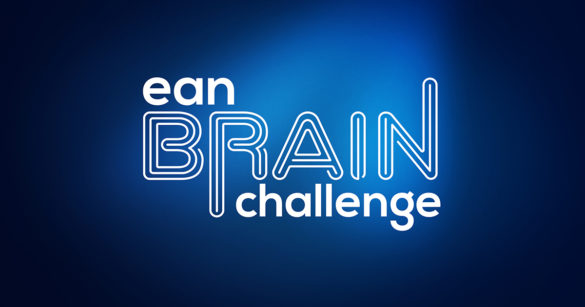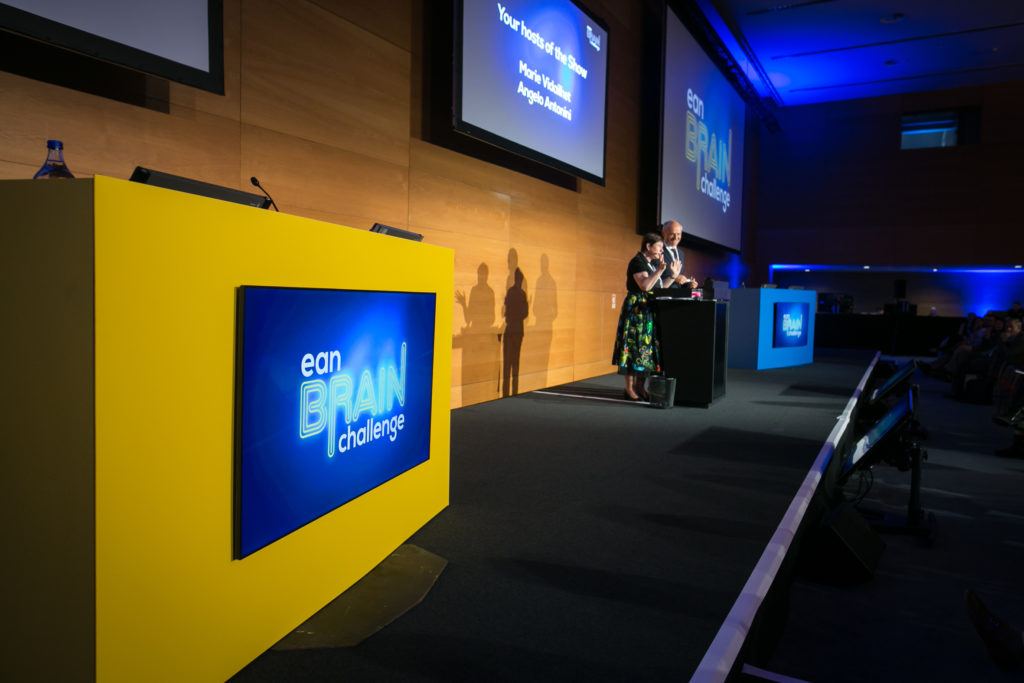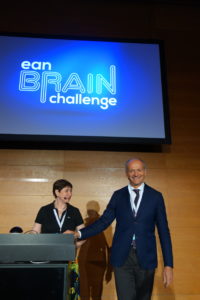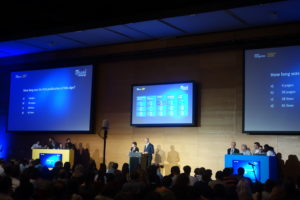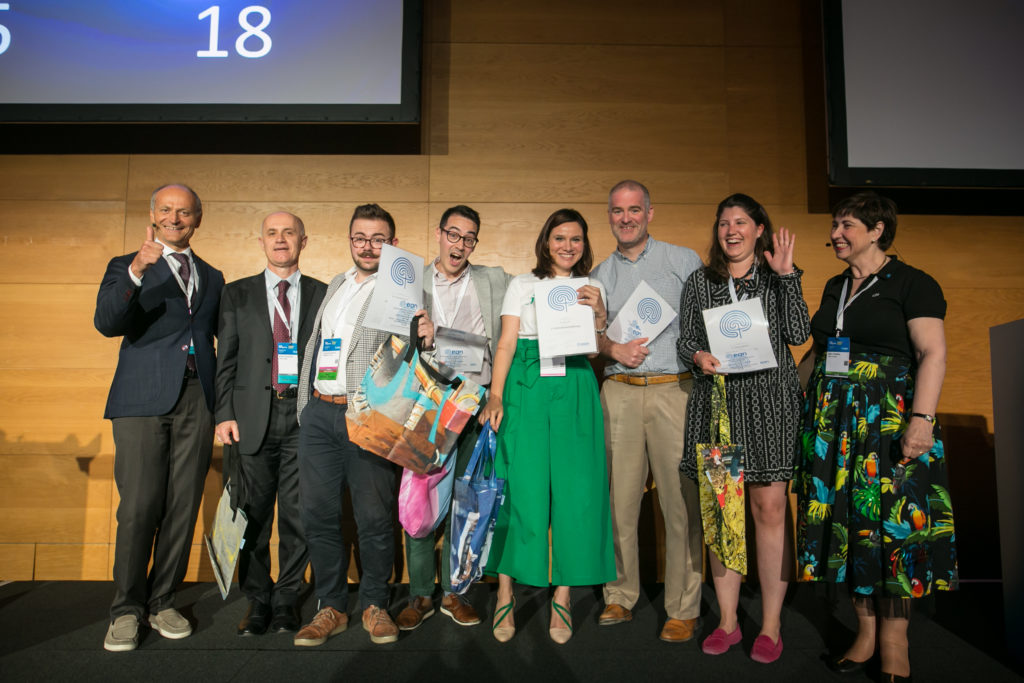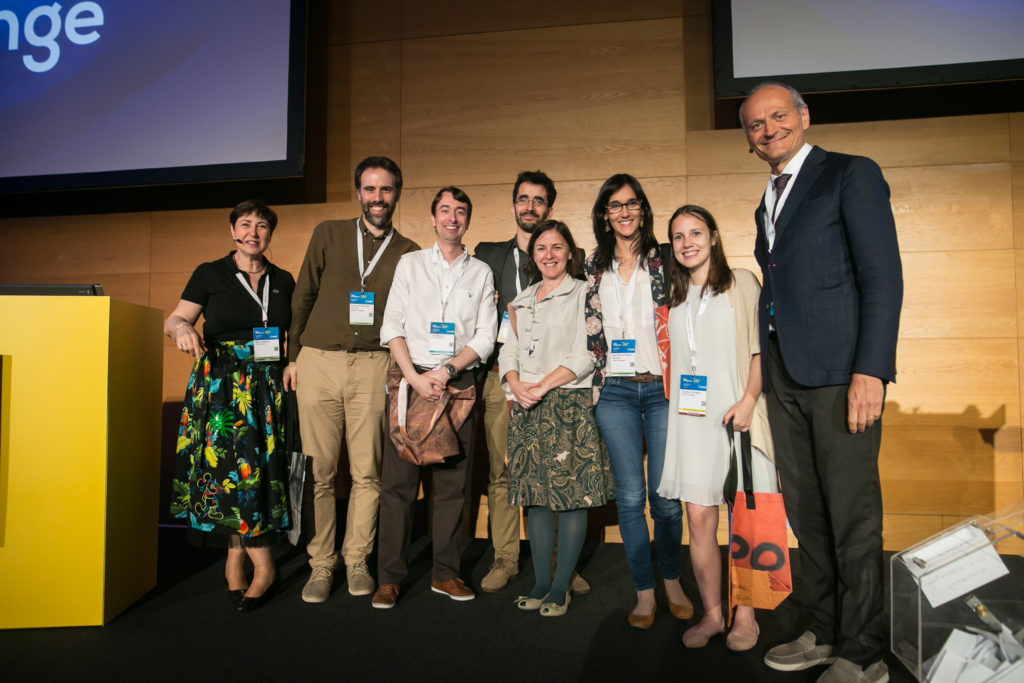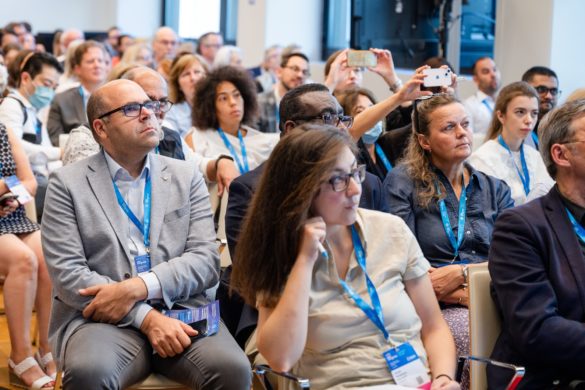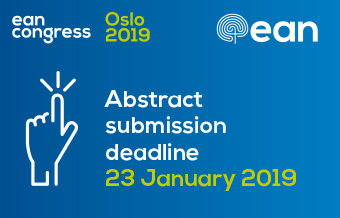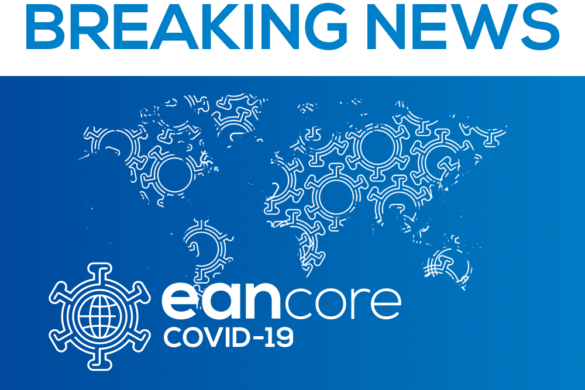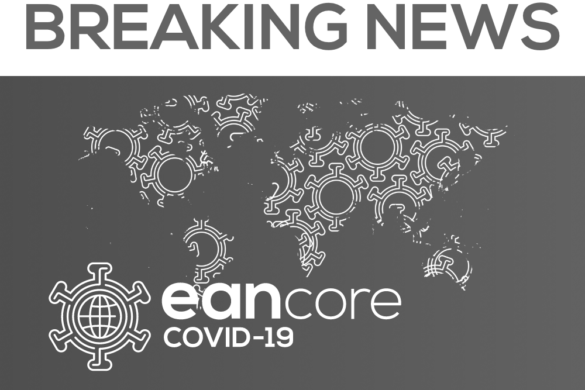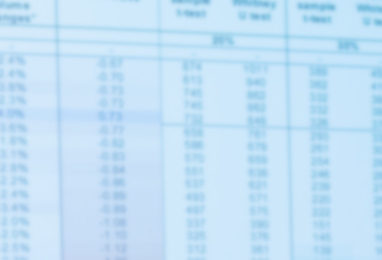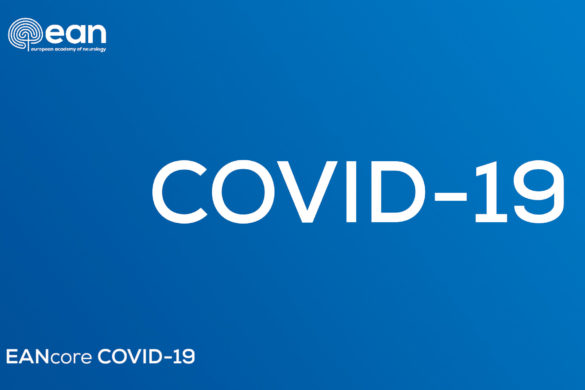The inaugural EAN Brain Challenge, hosted by Prof. Marie Vidailhet and Prof. Angelo Antonini, pitted a local Portuguese team against an international team, including members from Germany, Italy, Romania and Ireland, answering case-based questions posed by the various scientific panels, graded according to difficulty. International team members: Carlo Colosimo (Italy), Dan Healy (Ireland), Ioana Ion (Romania), Frederik Winsløw (Denmark), Alexandre Bonnet (France), and Diana Lehmann (Germany); local team members: Luísa Alves, Ana Patrícia Antunes, Rui Barreto, João Massano, Vanessa Carvalho, and Miguel Pereira. The audience was also able to participate using the EAN App and responses displayed on the big screen.
The Portuguese must have been confident, fueled by their other national team’s strong start to another little competition taking place at the same time, the World Cup; a thrilling 3-3 draw with Spain the night before with a Cristiano Ronaldo hat-trick. But it was their international rivals who made the stronger start, correctly identifying a primary orthostatic tremor by the trembling hem sign. Shots on target were exchanged following questions on Toxocara canis encephalopathy (with eosinophilia and cerebellar signs), the length of Babinski’s original description of his sign (28 lines), and a case of manganese poisoning presenting with a Parkinsonian phenotype, neuropathy and liver steatosis, with high T1 signal in the basal ganglia. Carotid-cavernous fistulae, cataplexy and a case of Nocardial brain abscess followed before, around half-time, we entered the realm of the surreal, with the teams asked to identify the eponymous syndrome from which one of Snow White’s dwarves suffered: Angelman syndrome apparently although this writer was not entirely convinced. A classic case of copper myelopathy brought us back to the real world, followed by ciguatera poisoning presenting as a neuropathic pain syndrome. In the second half, more ring-enhancing lesions in the brain, this time fungal related to Aspergillus in an immunosuppressed patient, amphiphysin-antibody related stiff person syndrome with cerebellar involvement, and a hypnic headache. The international had forged a solid lead by this time, although the Portuguese team claimed a professional foul, having apparently received a faulty buzzer. The quiz moved into extra time with an expert’s round and the stakes were raised with challenging cases of GJA-1 oculodentodigital dysplasia, Pelizaeus-Merzbacker disease presenting rather like MS in a mother and daughter, oculomasticatory myorthymia in Whipple’s disease, and a case of POEMS. The Portuguese made a late fightback just before the final whistle, scoring by correctly identifying a case of HaNDL, which presented like recurrent hemiplegic migraine with CSF lymphocytosis and a benign course, but ultimately it was not quite enough and the international team held out for an 18-15 victory. The audience scored a few more again, perhaps proving that several hundred brains are better than six, and everyone went home from the stadium with a few more striking presentations of rarities added to the memory bank, just in case.
By Tom Jenkins

